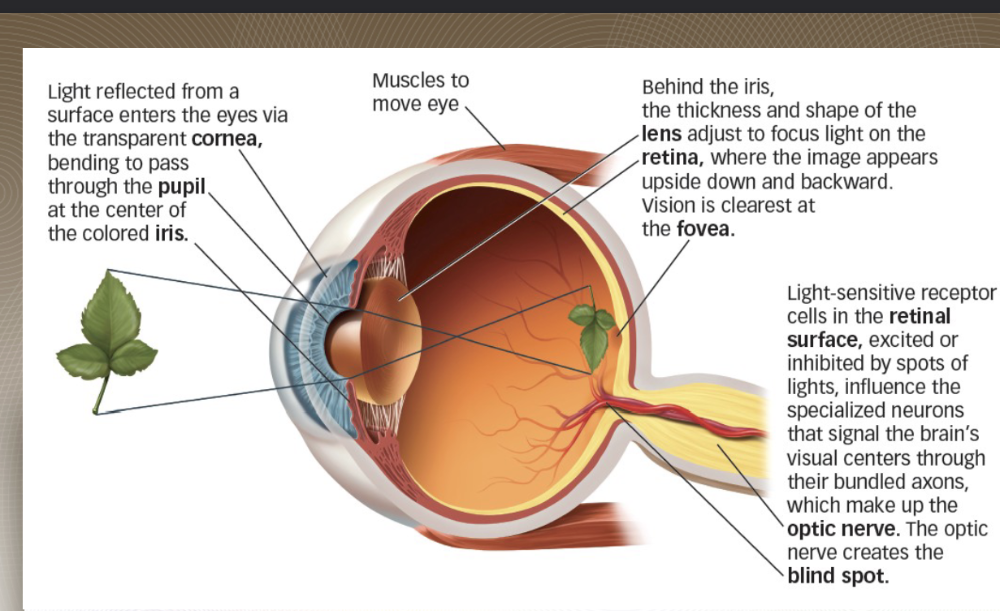Sensation
Translation of information from outside the nervous system into neural activity giving nervous system knowledge of the world
Transduction
what takes place when many sensors in the body convert physical signals (energy) from the environment into encoded neural (electrochemical) signals sent to the central nervous system.
Perception
Interpretation, identification and organization a sensation in order to form a mental representation that is meaningful
Absolute Threshold
minimal intensity (physical energy) needed to just barely detect a stimulus
Just Noticeable Difference (Difference
Threshold
Minimal change in a stimulus that can just barely be detected
Multitasking
Multitasking involves paying attention to more than one stimulus at the same time
Sensory Adaptation (Change vs Consistent Stimuli
Sensitivity to prolonged stimulation tends to decline over time as an organism adapts to current conditions.
Visual Acuity
Ability to see fine detail (it is the smallest line of letters that a typical person can read from a distance of 20 feet
20/20 Vision
perfect/normal vision
Light Wave (Wavelength)
Color is our perception of light wavelengths on the visible spectrum.
Cornea
transparent bulge on the front of eye; light enters here
Pupil
an opening in the iris; light passes through
Lens
elastic membrane capsule; thinner - focus on distant objects; thicker - focus on nearby objects.
Retina
Light-sensitive multilayered tissue lining the back of the eyeball (contains rods and cones)
Accommodation
Process by which the eye maintains
a clear image on the retina
Nearsightedness
see clearly what’s nearby, but distant objects are blurry because
light from
them is focused in front of the
retina, a
condition called myopia
Farsightedness
Distant objects are clear, but those objects nearby are blurry
because their point of focus falls beyond the
surface of the
retina a condition
called hyperopia.
Cones
Detect color, operate under normal daylight conditions, and allow us to focus on fine detail
Rods
Become active under low-light conditions for night vision
Fovea

a small depression within the neurosensory retina where visual acuity is the highest.
Blind Spot
Light sensitive receptor cells in the retinal surface excited by or inhibited by spots of light causes the optic nerve to develop a blindspot.
Primary Colors (Red, Green, Blue)
these 3 colors make up the entire color spectrum.
Color Deficiency
Color blindness (one or more cone types missing)
Ventral (What)
temporal lobe that allows us to perceive shape and identity.
Dorsal (Where)
to the parietal lobe that allows us to spatial relations.
Simplicity
When confronted with two or more
possible interpretations of an
object’s, the visual systems tends to select the simplest or most
likely interpretation
Closure
We tend to fill in missing elements of a
visual scene
Continuity
When edges or contours have same
we tend to group together edges
or contours that have the same orientation
Similarity
Regions that a similar in shape, color, or texture are perceived as belonging to the same object.
Proximity
Things that are close together tend to be grouped together
Common Fate
Elements of a visual image that move
together are perceived as
part of a single moving
object.
Figure-Ground
a human's ability to visually differentiate between an object and its background.